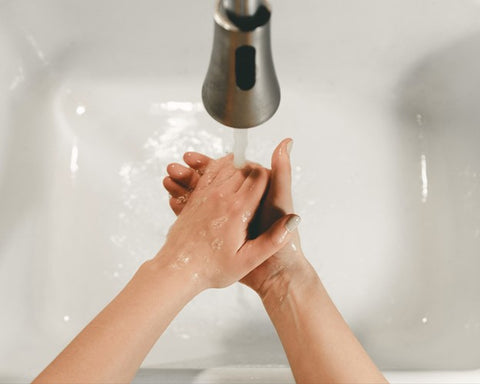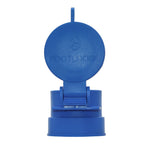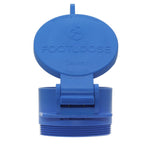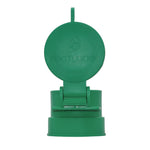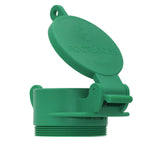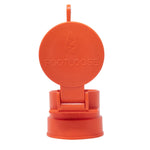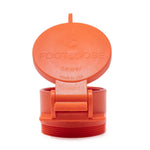You have no items in your shopping cart.
Not all used water has to end up in the same place.
Water treatment professionals distinguish between multiple types of used water. The lower the organic load of the water is, the better a candidate for reuse it becomes.
What Is Grey Water
Grey water is the used water that comes from a variety of regular household tasks. Water used for cleaning cookware and clothing is commonly considered grey water. Water used for bathing and handwashing is also grey water.
In most cases, all used water from a household source other than the toilet is considered greywater. As long as the water is not contaminated with sewage, it can qualify.
For plumbers, campground owners, and industrial waste managers, distinguishing grey water from sewage can lead to significant cost savings. Homeowners and RV park administrators can reuse water from certain sources, lowering their overall water costs in the process.
Basic Grey Water Guidelines
Grey water is defined by its organic load – the presence of organic matter in the water. In the case of grey water, that matter is typically a combination of soap and waste. Food waste, dirt, and perspiration all contain organic matter. Professionals measure water pollution by calculating the amount of oxygen microorganisms will require to decompose the organic matter it contains.
Since grey water contains a much lower organic load than sewage, it can be treated and put to good use. For example, it is often still perfectly usable for cleaning. When treated, it can irrigate certain plants – including food-producing plants – and carry much-needed nutrients into the soil.
Benefits of Grey Water Reuse
The two main benefits of reusing grey water are:
- Reducing Fresh Water Consumption. Using less fresh water will have an immediate impact on your water bill. On a wider scale, it can help reduce pressure on the public water supply. This makes grey water reuse a popular policy in deserts and other arid regions.
- Reducing Overall Sewage Load. By separating grey water from sewage, you can lower the overall amount of water sent to local sewage treatment plants. This can benefit the individual household and the entire community as well.
How Is Grey Water Treated for Reuse?
Grey water needs to be treated before use, especially in the case of irrigation for food-producing plants. There are multiple ways to treat grey water for reuse. Choosing the right method depends largely on the composition of the grey water itself, as well as its intended use. There is no single globally established standard for grey water treatment.
Most greywater treatment options combine multiple stages to achieve a high standard of quality. Natural treatment options use a combination of cascaded water flow, aeration, agitation, and filtration to remove contaminants and obtain water of decent quality for irrigation purposes. Microalgae and other biological agents can further reduce organic contamination.
The specifics of the treatment process vary widely from place to place. The composition of the water isn’t the only factor at play. Economic factors like the cost of filtration and the availability of fresh drinking water also play an important role. Sophisticated grey water treatment makes more sense in a dry, desert region than it does in an area with numerous aquifers and mountain springs nearby.
How to Use Grey Water From Household Sources
The original source of grey water is an important factor for its overall usefulness. Categorizing your water sources is an easy way to start planning your household greywater reuse system.
1. How to Reuse Grey Water From the Washing Machine
Washing machines are among the highest water consumers in the typical household. Recycling washing machine water is an easy way to immediately reduce water consumption costs.
One of the easiest ways to reuse grey water from the washing machine is to divert it towards your home’s toilet. In areas where water is scarce or expensive, there is no need to use fresh drinking water to flush the toilet – and no treatment necessary.
2. How to Reuse Grey Water From the Shower
Grey water from the shower has a lower level of organic load compared to grey water from the washing machine or kitchen sink. This makes it easier to reuse shower grey water without investing in sophisticated treatment systems beforehand.
Diverting shower grey water directly to the garden only requires a storage and filter system that deposits the water underground. It’s better to discharge grey water underground rather than on the surface because pooling greywater can pool become a breeding ground for bacteria and insects.
3. How to Reuse Grey Water From the Sink
In some jurisdictions, kitchen sink grey water is considered sewage. This is because most households dispose of large amounts of food waste in the kitchen sink. If the level of organic waste is too high, the water will require significant treatment to become usable grey water.
At the highest concentrations of organic matter, kitchen sink grey water is ideal for flushing toilets and carrying sewage away from the property. At low concentrations, small-scale filtration and treatment is enough for recycling grey water effectively.
Grey Water Pumping Systems Explained
Simple grey water systems use gravity to divert used water. This is often the case when using grey water to irrigate home gardens, but it doesn’t always work. If the grey water’s destination is located above the storage tank, for instance, gravity won’t do the job on its own – you will need a grey water pump.
Electrical pump systems allow property owners to divert water even when there is insufficient fall between the water source and its destination. Depending on the organic load of the water itself, an additional filtering step may be necessary to prevent the pump from clogging.
There are numerous grey water filtration methods available. Simple filters use layers of filter cloth or substrates such as sand or pine bark. Sophisticated systems may include solutions for aerobic digestion of organic material or disinfection with chemicals or ultraviolet light.
If there is sufficient distance between the floor level and the ground level outside a home, it’s possible to divert laundry and bathroom grey water to an external surge tank using a combination of gravity and pumping. Gravity sends the water to the external surge tank, and a pump diverts the filtered water to its destination.
Using Grey Water to Irrigate Home Gardens
Home garden irrigation is one of the easiest and most effective uses for grey water since it requires minimal filtering. In many cases, it’s possible to pipe grey water directly outside the house and use it to water fruit trees and ornamental plants.
Homeowners who exclusively use biodegradable cleaning products can divert grey water directly from the washing machine to outdoor gardens. The washing machine is an especially attractive option for irrigating home gardens for two reasons:
- Washing machines typically use a large volume of water.
- Washing machines feature their own internal pumping mechanism.
This means that you can divert water directly from your washing machine to your home garden without using extra filters or pumps. However, keep in mind that most washing machines do not have a particularly strong pump installed – you won’t be able to send water uphill without more power.
You will need to dig trenches and install PVC tubing that deposits washing machine grey water to your garden. As long as the water does not contain a high level of salt, boron, or chlorine bleach, it will carry nutrients to the soil and offer a simple, cost-efficient method for home garden irrigation.
Grey Water Usage Around the House
While irrigating home gardens is one of the easiest ways to reuse household grey water, it isn’t the only way. Homeowners can also divert grey water towards lagoons or ponds, providing nutrients for fish, which may then provide food for ducks and waterfowl. This requires a greater level of filtration to avoid contaminating the mini-ecosystem and poisoning the creatures that rely on it.
Toilet flushing can account for a significant amount of grey water use around the house. Simply pump grey water into the toilet bowl for flushing. Do not put grey water in the toilet tank – the difference in pressure may cause the water to back siphon into the fresh water supply, contaminating local drinking water.
Grey Water Resources
Find out more about how to use household grey water and reduce freshwater consumption with the following resources:


